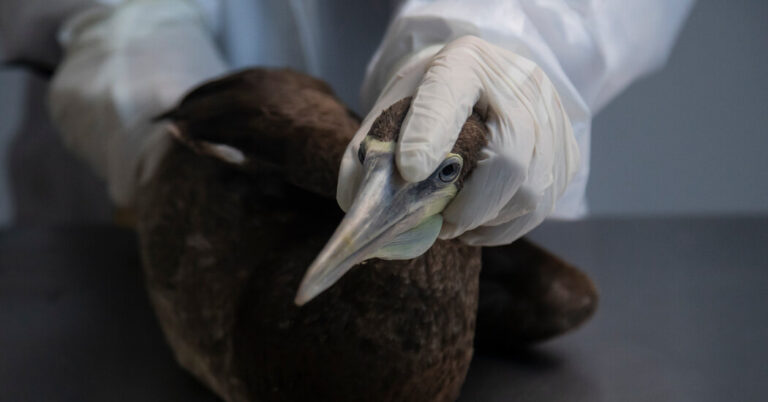Over the past three years, a highly lethal form of avian influenza has swept the globe, killing birds in Europe, Africa and Asia before jumping across the ocean and causing the worst bird flu outbreak in United States history.
Last fall, the virus, known as H5N1, finally arrived in South America. It raced up the Pacific coast and killed wild birds and marine mammals in massive numbers. Peru and Chile alone reported more than 500,000 dead seabirds and 25,000 dead sea lions, according to a new reportpublished last week by OFFLU, a global network of flu experts.
Now, scientists are worried that the virus will make its way to Antarctica, one of only two continents – along with Australia – that has not yet been hit by the pathogen. “The negative impact of this virus on Antarctic wildlife could be enormous – probably worse than on wildlife in South America,” the report warned.
More than 100 million birds breed in Antarctica and nearby islands, and many marine mammals swim in the surrounding waters. Some of those species, including the unique emperor penguin and Antarctic fur seal, come together in large colonies. “And that could be a recipe for disaster,” said Dr. Ralph Vanstreels, a researcher in a Latin American wildlife health program at the University of California, Davis, and an author of the new report. “We could be looking at a very high death toll.”
This bird flu variant, which appeared in 2020, caused a massive outbreak in poultry farms, resulting in the death of nearly 60 million farmed birds in the United States only. But unlike earlier versions of the virus, it also spread widely among wild birds and regularly spilled into wild mammals.
The virus first appeared in South America in October 2022, spreading from Colombia to Chile in just three months. “Once it started moving south, it did so very quickly,” said Dr. Marcela Uhart, who directs the UC Davis Latin American wildlife health program and is an author of the OFFLU report.
Casualties are hard to count because many infected animals are likely never seen, scientists say, and not all dead animals that turn up have been tested for the virus. But hundreds of thousands of dead seabirds, including boobies, cormorants and gulls, have been reported in South America. The losses amounted to 36 percent of Peru’s population of Peruvian pelicans and 13 percent of Chile’s Humboldt penguins, according to the report.
Sea lions in South America also died by the thousands, representing 9 percent of the population in Peru and Chile. (Scientists still aren’t sure exactly how marine mammals get the virus or whether it spreads easily among them.)
The virus continues to move south. In June, it appeared on a South American sea lion off the southern tip of Chile, just 670 miles from the Antarctic Peninsula. Some birds regularly wander between South America and Antarctica, feeding in both locations. Others will go to their Antarctic breeding sites when spring arrives in the Southern Hemisphere, possibly bringing the virus with them.
Antarctica has never had an outbreak of highly pathogenic bird flu before and its residents likely have few immune defenses against the virus. “Populations are completely naive,” said Dr. Thijs Kuiken, a veterinary pathologist at the Erasmus University Medical Center in the Netherlands and an author of the new report. “The concern is that the first time it goes through, it’s really going to have a high impact in terms of the mortality rate.”
Many of the region’s birds, including emperor penguins and sooty shearwaters, already face other threats, from sources including climate change, the fishing industry or other human activities. Some species, such as the southern pintail and the Macquarie shag, are restricted to only a few islands. “So if you have an outbreak on those islands, the whole species basically collapses,” said Dr. Vanstreels.
Local marine mammals may also be at risk. Although the Antarctic fur seal has a wide range, 95 percent of the population lives around just one island, making it vulnerable to an outbreak.
At this point, the virus is so widespread that it may not be able to stop it from reaching Antarctica. “Right now, there’s nothing we can do to prevent it,” said Dr. Kuiken “So it’s important in the coming months to be as alert as possible.”
It will be critical to monitor wild populations to learn more about how the virus spreads, what species may be more at risk and what conservation actions may be needed to help them recover, said the scientists. “What we’re trying to do is document it carefully, trying to understand how the virus moves to see how we can better protect the species in the future,” said Dr. Uhart.
